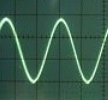
and Inverters


|
RV AC-Utility Power and Inverters |

|

|

|

|
 Aux Buss
Aux Buss
|
300W square wave Inverter

|



|

|
 One side...
One side...
|

Actual picture of a Modified Sine Inverter |

Animation of inverter driving a Transformer load |


|

|


|

|
 Animation of inverter driving a load
Animation of inverter driving a load
|

 Input power...
Input power...
|


|

 The two currents...
The two currents...
|


|